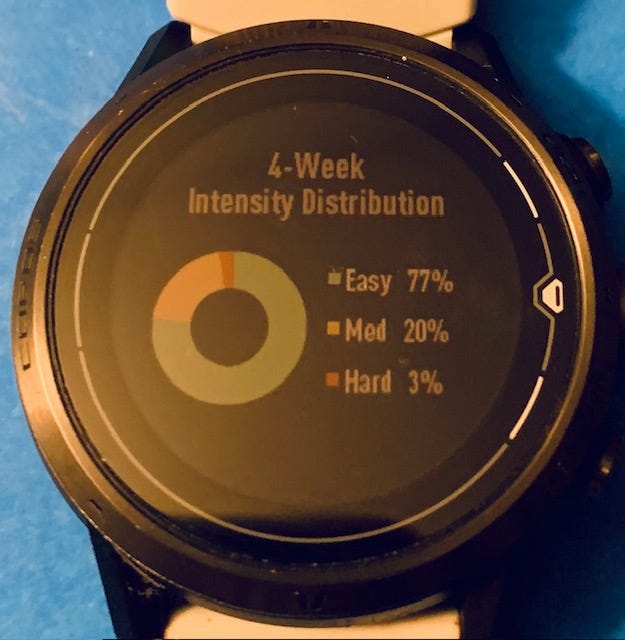We’re going to talk about establishing heart rate zones, or HR Zones as they’ve come to be known. Before we get into the details – and guys, there are a lot of details – it’s important that we stress one point above all others. Heart rate training really doesn’t need to be that complex.
Forget about focusing on HIIT or Threshold or the magically athletic boosting properties of Zone Whatever. To reach your long-term potential as a runner, you need to spend time in all your zones.
The formula that works for most runners is simple. Complete 80 percent of your running in Zones 1 and 2 (low intensity, easy), with the remaining 20 percent cranking into Zones 3 and 4 (higher intensity workouts), along with a touch of Zone 5 depending on the specifics of your training plan.
One way to accomplish that mission is by teaching yourself how to run with varying levels of effort, so that easy running is actually easy and workouts feel legitimately hard. That’s where monitoring heart rate enters the picture, as we discussed last week in Part 1 of this series.
Without any context, however, heart rate is just a number. Is 135 good? What about 162: too high, too low, or just right? The answer is that it depends on numerous factors including age, fitness, genetics and what you’re trying to accomplish with your run on that particular day.
Don’t let all this ambiguity deter you. Establishing your HR Zones can help demystify the training process, while also providing shape and context to your run. No matter if you’re running easy at 135, or getting after it with a Zone 4 Threshold workout at 162.
But first, we need to talk about lactate.




